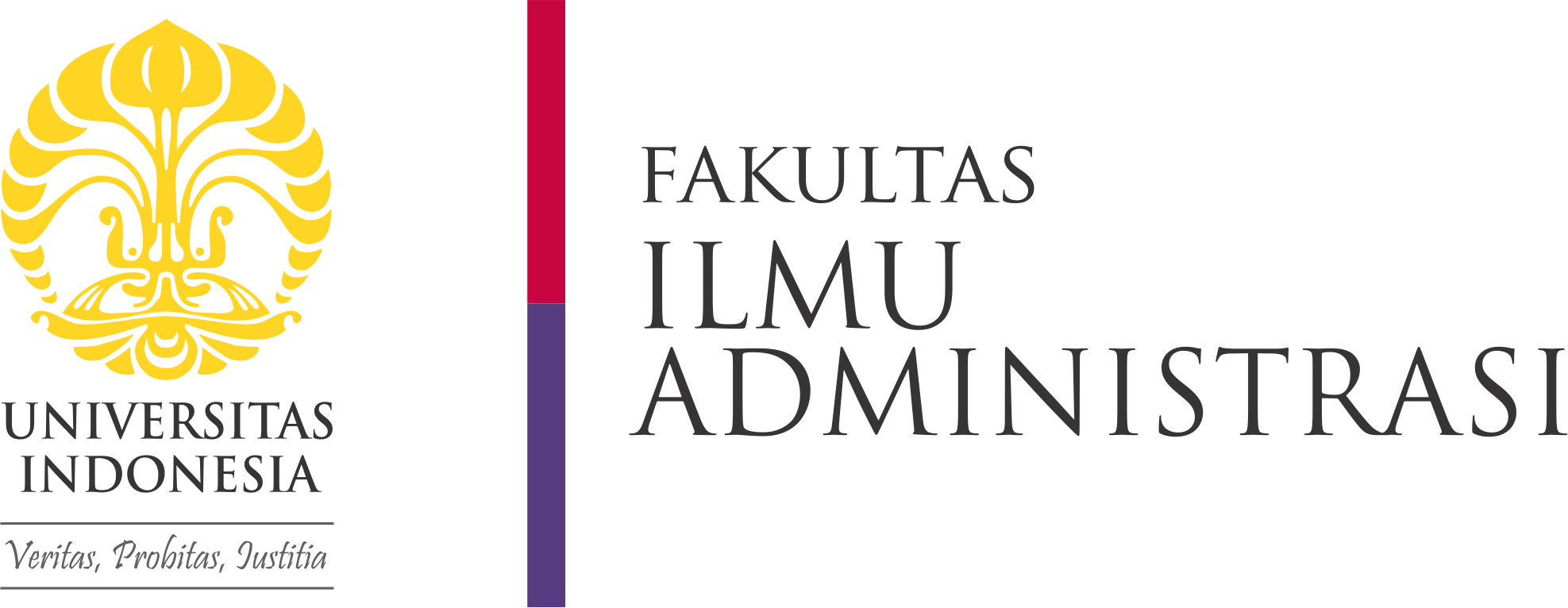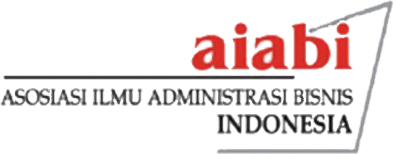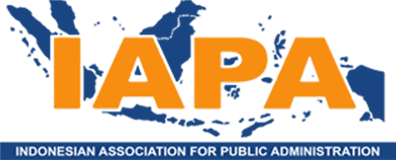Creative Commons License

This work is licensed under a Creative Commons Attribution-Share Alike 4.0 International License.
Abstract
Considering the changes in the social and economic environment in the past two decades and their ongoing status in the new century, it is unanimously believed that the nature of employee-organization relationship (EOR) has changed significantly. EOR, as a research field, has increasingly been recognized as a locus of research on organizational behavior, human resource management, and employment relationships. There is a research demand to integrate the academic literature to reach a better understanding of EOR. Adopting the methodology of systematic literature review proposed by Centobelli et al. (2017), the present research provides a comprehensive analysis of eighty pieces of EOR research published from 1990 to 2020. The information on authors, publication year, journals, types of article, research foci, methodologies, theoretical frameworks, and recommendations for future research based on research gaps is tabulated and presented. Three theoretical gaps are identified in the current EOR research: a lack of research on the organizational context, on the integration of micro- and macro-level EOR, and on the multidimensional analysis of individual behavior, organizational context, and employment relationships. Theoretical gaps, results, discussion, and the conceptual framework proposed for future studies are also presented. Finally, strengths and limitations of the study are discussed.
References
Alcover, C.M, Rico, R., Turnley, W.H., and Bolino, M.C. (2017). Understanding the changing nature of psychological contracts in 21st century organizations: Amultiple-foci exchange relationships approach and proposed framework. Organizational Psychology Review, 7(1), 4–35.
Argyis, C. (1960). Understanding organizational behavior. The Dorsey Press, Inc.
Audenaert, M., Vanderstraeten, A., and Buyens, D. (2017). When affective well-being is empowered: the joint role of leader-member exchange and the employment relationship. The International Journal of Human Resource Management, 28(15), 2208-2227.
Audenaert, M., George, B., and Decramer, A. (2017). How a demanding employment relationship relates to affective commitment in public organizations: A multilevel analysis. Public Administration, 97(1), 11–27.
Audenaert, M., Carette, P., Shore, L.M., Langed, T., Waeyenberga, T.V., and
Decramera, A. (2018). Leader-employee congruence of expected contributions in the employee-organization relationship. The Leadership Quarterly, 29(3), 414-422.
Baker, T.B. (2009). Towards a new employment relationship model Aligning the changing needs of individual and organization. Leadership & Organization Development Journal, 30(3), 197-223.
Barbour, J.B., Treem, J.W., and Kolar, B. (2018). Analytics and expert collaboration: How individuals navigate relationships when working with organizational data. Human Relations, 71(2), 1–29.
Bardarova S and Ivana S (2019). Managers Role in achieving balance between people and organization. 50th International Scientific Conference Contemporary economic trends : technological development and challenges of competitiveness. Serbia, 18 October 2019, Faculty of Economics, University of Niš. 199-205.
Barnard, C. (1938). Functions of the executive. Harvard University Press.
Bell, S.J., and Menguc, B. (2002). The employee-organization relationship,OCBs, and superior service quality. Journal of Retailing, 78(2), 131-146.
Bellou, V. (2007). Past working experience foretells future employment relationship quality. International Journal of Organization Theory & Behavior, 10(1), 35-50.
Biggane, J.E., Allen, D.G., and Albert, L.S. (2016). The role of positive illusions in employment relationships. Human Resource Management Review 26(2016): 270-281.
Blau, P. (1964). Exchange and power in social life. John Wiley.
Bornay-Barrachina, M., Rosa-Navarro, D.D., López-Cabrales, A., and Valle-Cabrera, R. (2011). Employment Relationships and Firm Innovation: The Double Role of Human Capital. British Journal of Management, 23(2), 223-240.
Bornay-Barrachina, M., López-Cabrales, A., and Valle-Cabrera, R. (2016). How do employment relationships enhance firm innovation? The role of human and social capital. The International Journal of Human Resource Management, 28(9), 1363-1391.
Boxall, P. (2013). Mutuality in the management of human resources: assessing the quality of alignment in employment relationships. Human Resource Management Journal, 23(1), 3–17.
Bray, M., Budd, J.W., and Macneil, J. (2019). The Many Meanings of Co-Operation in the Employment Relationship and Their Implications. British Journal of Industrial Relations, 58(1), 114–141.
Brzozowski, S., Rainbow, J.G., Pinekenstein, B., Knudsen, E.A., and Steege, L.S. (2018). Exploration of Relationships among Individual and Organizational Characteristics, Nurse Leader Fatigue, and Turnover Intention. Proceedings of the Human Factors and Ergonomics Society 2018 Annual Meeting 62(1), 627-631.
Buch, R. (2015). Leader–member exchange as a moderator of the relationship between employee–organization exchange and affective commitment. The International Journal of Human Resource Management 26(1), 59–79.
Brandts, J., and Solà, C. (2010). Personal relations and their effect on behavior in an organizational setting: An experimental study. Journal of Economic Behavior & Organization 73, (2010), 246–253.
Carter, S.P., Dudley, W., Lyle, D.S., and Smith, J. (2019). Who’s the Boss? The effect of strong leadership on employee turnover. Journal of Economic Behavior & Organization, 159(2019), 323–343.
Cai, H.R., Li, M., and Guan, P.P. (2016). Fostering Managers knowledge sharing behavior : the impact of the employee-organization relationship. Social behavior and personality, 44(4), 669-678.
Centobelli, P., Cerchione, R., and Esposito, E. (2017). Knowledge Management in Startups: Systematic Literature Review and Future Research Agenda. Sustainability, 9(361), 1-19.
Cerchione, R., and Esposito, E. (2016). A Systematic Review of Supply Chain Knowledge Management Research: State of the Art and Research Opportunities. Int.J.Prod.Econ, 182(2016), 276–292.
Chen, C.A., and Brudney, J.L. (2009). A Cross-Sector Comparison of Using Nonstandard Workers Explaining Use and Impacts on the Employment Relationship. Administration & Society, 41( 3), 313-339.
Cheng, Y. (2018). Looking back, moving forward: A review and reflection of the organization-public relationship (OPR) research. Public Relations Review, 44(1), 120-130.
Chen, Z.F., Hong, C., and Occa, A. (2018). How different CSR dimensions impact organization-employee relationships The moderating role of CSR-culture fit. Corporate Communications: An International Journal, 24(1), 63-78.
Clarkson, G.P. (2014). Twenty-first century employment relationships : the case for an altruistic model. Human Resource Management, 53(2), 253–269.
Cohen, A., and Keren, D. (2008). Individual Values and Social Exchange Variables Examining Their Relationship to and Mutual Effect on In-Role Performance and Organizational Citizenship Behavior. Group & Organization Management, 33(4), 425-452.
Coyle-Shapiro, J.A.M., and Shore, L.M. (2007). The employee-organization relationship: where do we go from here?. Human resource management review, 17(2), 166-179.
Cunyat, A., and Sloof, R. (2011). Employee types and endogenous organizational design: An experiment. Journal of Economic Behavior & Organization, 80(3), 553– 573.
Dhanesh, G.S., (2014). CSR as Organization– Employee Relationship Management Strategy: A Case Study of Socially Responsible Information Technology Companies in India. Management Communication Quarterly, 28(1), 130–149.
Díaz-Fernández, M., López-Cabrales, A., and Valle-Cabrera, R. (2020). Strength of HRM systems and perceived organizational support as determinants of employment relationships: The perspective of HR managers and workers’ representatives. Business Research Quarterly Article, 1–15.
Eldor, L., and Vigoda-Gadot, E. (2016). The nature of employee engagement: rethinking the employee–organization relationship. The International Journal of Human Resource Management, 28(3), 1-27.
Evered, R.D. (1977). Personal scenarios : An empirical stady of their relation to individual performance and to organizational Activism. Human Relations, 30(11), 1057-1069.
Fitzsimmons, S.R., and Stamper, C.L. (2014). How societal culture influences friction in the employee–organization relationship. Human Resource Management Review, 24(1), 80–94.
Gerwen, V.N., Buskens, V., and Lippe, V.D.T. (2018). Employee cooperative behavior in organizations: a vignette experiment on the relationship between training and helping intentions. International Journal of Training and Development, 22(3), 192-209.
Gillis, T.L. (2017). Employee–Organization Relationship. The International Encyclopedia of Organizational Communication. John Wiley & Sons, Inc.
Gitau, J.G., and Chebii, S.J. (2020). Prioritising employee-organisation relationships in non-profit organisations in Kenya: Antecedents, queries and contradictions. Journal of Development and Communication Studies, 7(1), 110-123.
Gouldner, A.W. (1960). The norm of reciprocity: A preliminary statement. American Sociological Review, 25(2), 161-178.
Greenwood, C.A. (2016). Golden Handcuffs in the Fortune 1000? An Employee-Organization Relationship Survey of Public Relations Executives and Practitioners in the Largest Companies. Communication Research Reports, 33(3), 269–274.
Holland, D.W. (2008). Work Addiction: Costs and Solutions for Individuals, Relationships and Organizations. Journal of Workplace Behavioral Health, 22(4), 1-15.
Hom PW, Tsui AS, Wu JB, Lee TW, Zhang AY, Fu PP, and Li L (2009) Explaining employment relationships with social exchange and job embeddedness. Journal of Applied Psychology, 94(2), 277-297.
Jia. L., Shaw, J., Tsui, A., and Park, T.Y. (2014). A Social structural perspective on employee – organization relationships and team creativity. Academy of Management Journal, 57(3), 869–891.
Jiang, H. (2012). A model of work–life conflict and quality of employee–organization relationships (EORs): Transformational leadership, procedural justice, and family-supportive workplace initiatives. Public Relations Review, 38(2), 231– 245.
Johnston, R.H.J.R. (1974). Some personality correlates of the relationships between individuals and organizations. Journal of Applied Psychology, 59(5), 623-632.
K¨ahk¨onen, T., Blomqvist, K., Gillespie, N., and Vanhala, M. (2021). Employee trust repair: A systematic review of 20 years of empirical research and future research directions. Journal of Business Research, 130(3), 98–109.
Kang, M., and Sung, M. (2017). How symmetrical employee communication leads to employee engagement and positive employee communication behaviors:The mediation of employeeorganization relationships. Journal of Communication Management, 21(1), 82-102.
Kang, M., and Sung, M. (2019). To leave or not to leave: the effects of perceptions of organizational justice on employee turnover intention via employee-organization relationship and employee job engagement. Journal of Public Relations Research, 31(5-6), 152-175.
Kent, M.L., and Taylor, M. (2002). Toward a dialogic theory of public relations. Public Relations Review, 28(1), 21–37.
Kessler, I., and Coyle Shapiro, J. (1998). Restructuring the employment relationship in Surrey County Council. Employee Relations, 20(4), 365-382.
Kim, H.S. (2007). A Multilevel Study of Antecedents and a Mediator of Employee-Organization Relationships. Journal of Public Relations Research, 19(2), 167-197.
Kim, S., Tam, L., Kim, J.N., and Rhee, Y. (2017). Determinants of employee turnover intention: Understanding the roles of organizational justice, supervisory justice, authoritarian organizational culture and organization-employee relationship quality. Corporate Communications: An International Journal, 22(3), 308-328.
Kim, D. (2018). Examining effects of internal public relations practices on organizational social capital in the Korean context: mediating roles of employee-organization relationships. Corporate Communications: An International Journal, 23(1), 100-116.
Kim, Y., Kang, M., Lee, E., and Yang, S.U. (2019). Exploring crisis communication in the internal context of an organization: Examining moderated and mediated effects of employee-organization relationships on crisis outcomes. Public Relations Review, 45(3), 1-17.
Koh, W.L., and Yer, L.K. (2000). The impact of the employee-organization relationship on temporary employees' performance and attitude: testing a Singaporean sample. The International Journal of Human Resource Management, 11(2), 366-387.
Kuvaas, B. (2008). An exploration of how the employee-organization relationship affects the linkage between perception of developmental human resource practices and employee outcomes. Journal of Management Studies, 45(1), 1-25.
Lee, Y., and Kim, J.N. (2017). Authentic enterprise, organization-employee relationship, and employee-generated managerial assets. Journal of Communication Management, 21(3), 236-253.
Lee, Y., Kim, K.H., and Kim, J.N. (2019). Understanding the impacts of issue types and employee–organization relationships on employees’ problem perceptions and communicative behaviors. Corporate Communications: An International Journal, 24(3), 553-568 .
Li, S., and Chen, H. (2019). Closeness or Distance? An Investigation of Employee–Organization Relationships: From a Psychological Distance Perspective. Original Reseech, 9(2765), 1-15.
Li, J., Jia, L., Cai, Y., Kwan, H.K., and You, S. (2020). Employee-Organization Relationships and Team Performance: Role of Team Collective Efficacy. Frontiers in Psychology, 11(206), 1-14.
Li, X., Zhang, A., and Guo, Y. (2020). Are proactive employees more creative? The roles of multisource information exchange and social exchange-based employee-organization relationships. Personality and Individual Differences, 170(3), 1-6.
Lopez-Cabrales, A.L., Valle-Cabrera, R., and Galan, J.L. (2011). Employment relationships as drivers of firm flexibility and learning. Personnel Review, 40(5), 625-642.
Lopez-Cabrales, A.L., and Valle-Cabrera, R. (2019). Sustainable HRM strategies and employment relationships as drivers of the triple bottom line. Human Resource Management Review, 30(3), 1-11.
March, J., & Simon, H. (1958). Organizations. Wiley.
Masterson, S.S., and Stamper, C.L. (2003). Perceived organizational membership: an aggregate framework representing the employee–organization relationship. Journal of Organizational Behavior , 24(5), 473-490.
Meijerink, J. (2014). Practicing Social Innovation: Enactment of the Employee–Organization Relationship by Employees. In Human Resource Management,Social Innovation and Technology Advanced Series in Management. Emerald Group Publishing Limited, 135-153.
Men, R.L. (2011). How employee empowerment influences organization-employee relationship in China. Public Relations Review, 37(4), 435– 437.
Men, R.L., and Stacks, D. (2014). The Effects of Authentic Leadership on Strategic Internal Communication and Employee-Organization Relationships. Journal of Public Relations Research, 26(4), 301-324.
Men, R.L., and Jiang, H. (2016). Cultivating Quality Employee-Organization Relationships: The Interplay among Organizational Leadership, Culture, and Communication. International Journal of Strategic Communication, 10(5), 462-479.
Men, R.L., and Robinson, K.L. (2018). It’s about how employees feel! examining the impact of emotional culture on employee–organization relationships. Corporate Communications: An International Journal, 23(4), 470-491.
Men, R.L., and Sung, Y. (2019). Shaping Corporate Character Through Symmetrical Communication: The Effects on Employee-Organization Relationships. International Journal of Business Communication, 59(3), 1–23.
Ni, L. (2007). Refined understanding of perspectives on employee-organization relationships Themes and variations. Journal of Communication Management, 11(1), 53-70.
Ni, L. (2009). Strategic role of relationship building: perceived links between employee-organization relationships and globalization strategies. Journal of Public Relations Research, 21(1), 100-120.
Ollier-Malaterre, A. (2010). Contributions of work–life and resilience initiatives to the individual/organization relationship. Human Relations, 63(1), 41–62.
Ribeiro, S.D., and Urbano, D. (2010). Employee-organization relationship in collective entrepreneurship: an overview. Journal of Organizational Change Management, 23(4), 349–359.
Rousseau, D.M., Hornung, S., and Kim, T.G. (2009). Idiosyncratic deals: Testing propositions on timing, content, and the employment relationship. Journal of Vocational Behavior, 74(3), 338–348.
Rynes, S., Bartunek, J., Datton, J., and Margolis, J. (2012). Introduction yo special topic forum care and compassion through an organizational lens: opening up new possibilities. Academy of Management Review, 37(4), 503-523.
Schauder, M.J. (2016). Employee-Organization Relationship. The Encyclopedia of Adulthood and Aging. JohnWiley & Sons,Inc, 1-5.
Shaw, J.D., Dineen, B.R., Fang, R., and Vellella, R.F. (2009). Employee-organization exchange relationships, HRM practices, and quit rates of good and poor performers. Academy of Management Journal, 52(5), 1016-1033.
Shen, H. (2011). Organization – employee relationship maintenance Strategies: a new measurining intrument. Journalism & Mass Communication Quarterly, 88(2), 398-415.
Shore, L.M., and Barksdale, K. (1998). Examining degree of balance and level of obligation in the employment relationship: a social exchange approach. Journal of Organizational Behavior, 19(S1), 731-744.
Shore, L., and Colye-Shapiro, J. (2003). New developments in the employee–organization relationship. Journal of Organizational Behavior, 24(5), 443–450.
Shore, L.M., Bommer, W.H., Rao, A.N., and Seo, J. (2009). Social and economic exchange in the employee-organization relationship: the moderating role of reciprocation wariness. Journal of Managerial Psychology, 24(8), 701 – 721.
Shore, L.M., Coyle-Shapiro, J.A.M., Chen, X.P., and Tetrick, L.E. (2009). Social exchange in work settings: Content, mixed and process models. Management and Organization Review, 5(3), 289-302.
Shore, L., Coyle-shapiro, J., and Tetric, L. (2012). The Employee – Organization Relationship applications for the 21st century ,(1th Edition), Routledge. Taylor & Francis group.
Shore, L.M., Tetrick, L.E., Taylor, M.S., Coyle-Shapiro, J.A.M., Liden, R.C., and McLean Parks, J., et al. (2015). The employee-organization relationship: A timely concept in a period of transition. In J. Martocchio (Ed.). Research in personnel and human resource management, Emerald Group Publishing Limited, published online: 09 Mar 2015.
Snyder, H. (2019). Literature review as a research methodology: An overview and guidelines. Journal of Business Research, 104(2019), 333–339.
Sturman, M.C., and Walsh, K. (2014). Strengthening the employment relationship: The effects of work-hours fit on key employee attitudes. Journal of Organizational Behavior, J. Organiz. Behav, 35(6), 762-784 .
Tranfield, D., Denyer, D., and Smart, P. (2003). Towards a methodology for developing evidence-informed management knowledge by means of systematic review. British Journal of Management, 14(3), 207–222.
Tsui, A.S., Pearce, J.L., Porter, L.W., and Tripoli, A.M. (1997). Alternative approaches to the employee-organization relationship: Does investment in employees pay off ?. Academy of Management Journal, 40(5), 1089-1121.
Tsui, A., and Wang, D. (2002). Employment relationships from the employers perspective : current research and future directions. International Review of Industrial and Organizational Psychology, 17(2002), 77-114.
Tsui, A.S., and Wu, J.B. (2005). The new employment relationship versus the mutual investment approach : Implications for human resource management. Human Resource Management, 44(2), 115–121.
Wang, D., Tsui, A., Zhang, Y., and Ma, L. (2003). Employment relationships and firm perfor¬mance: Evidence from an emerging economy. Journal of Organizational Behavior, 24(5), 511-535.
Wang, T.K., Jang, B.J., Ju, H.J., and Kim, H. (2017). Fulfilling the promises: the impacts of employment relationship on turnover intention. International Review of Public Administration, 22(4), 364-379.
Wang, T., Long, L., Zhang, Y., and He, W. (2018). A Social Exchange Perspective of Employee-Organization Relationships and Employee Unethical Pro‑organizational Behavior: The Moderating Role of Individual Moral Identity. Journal of Business Ethics, 159(2), 473-489.
Winter, R.P., and Jacson, B.A. (2014). Expanding the younger worker employment relationship : insights from values-based organizations. Human Resource Management, 53(2), 311–328.
Wu, J.B., Hom, P.W., Tetrick, L.E., Shore, L.M., Jia, L., Li, C., and Song, L.J. (2006). The Norm of Reciprocity: Scale Development and Validation in the Chinese Context. Management and Organization Review, 2(3), 377–402.
Wu, J., Chen, W., and Liu, Y. (2010). An I-P/C Model of Employee-Organization Relationship: A Dual Perspective. Front. Bus. Res. China 2010, 4(4), 630–652.
Yan Zhang, A., Tsui, A.S., Song, L.J.W., Li, C.P., and Jia, L.D. (2008). How do I trust thee? The employee-organization relationship, supervisory support and middle managers' trust in the organization. Human Resource Management, 47(1), 111-132.
Yan Zhang, A., Jiwen Song, L., Tsui, A.S., and Fu, P.P. (2014). Employee responses to employment-relationship practices: The role of psychological empowerment and traditionality. Journal of Organizational Behavior, 35(6), 809-830.
Yoon, D.J. (2017). Compassion momentum model in supervisory relationships . Human Resource Management Review, 27(3), 473-490.
Yu, M.C., Mai, Q., Tsai, S.B., and Dai, Y. (2018). An Empirical Study on the Organizational Trust, Employee-Organization Relationship and Innovative Behavior from the Integrated Perspective of Social Exchange and Organizational Sustainability. Sustainability, 10(3), 1-14.
Recommended Citation
Rezazadeh, Fatemeh; Seyyed-Naghavi, Mir Ali; and Rezazadeh, Sima
(2023)
"A Theoretical Reflection on the Past, Present, and Future of Employee-Organization Relationship: A Systematic Literature Review,"
BISNIS & BIROKRASI: Jurnal Ilmu Administrasi dan Organisasi: Vol. 30:
No.
1, Article 4.
DOI: 10.20476/jbb.v30i1.1420
Available at:
https://scholarhub.ui.ac.id/jbb/vol30/iss1/4






